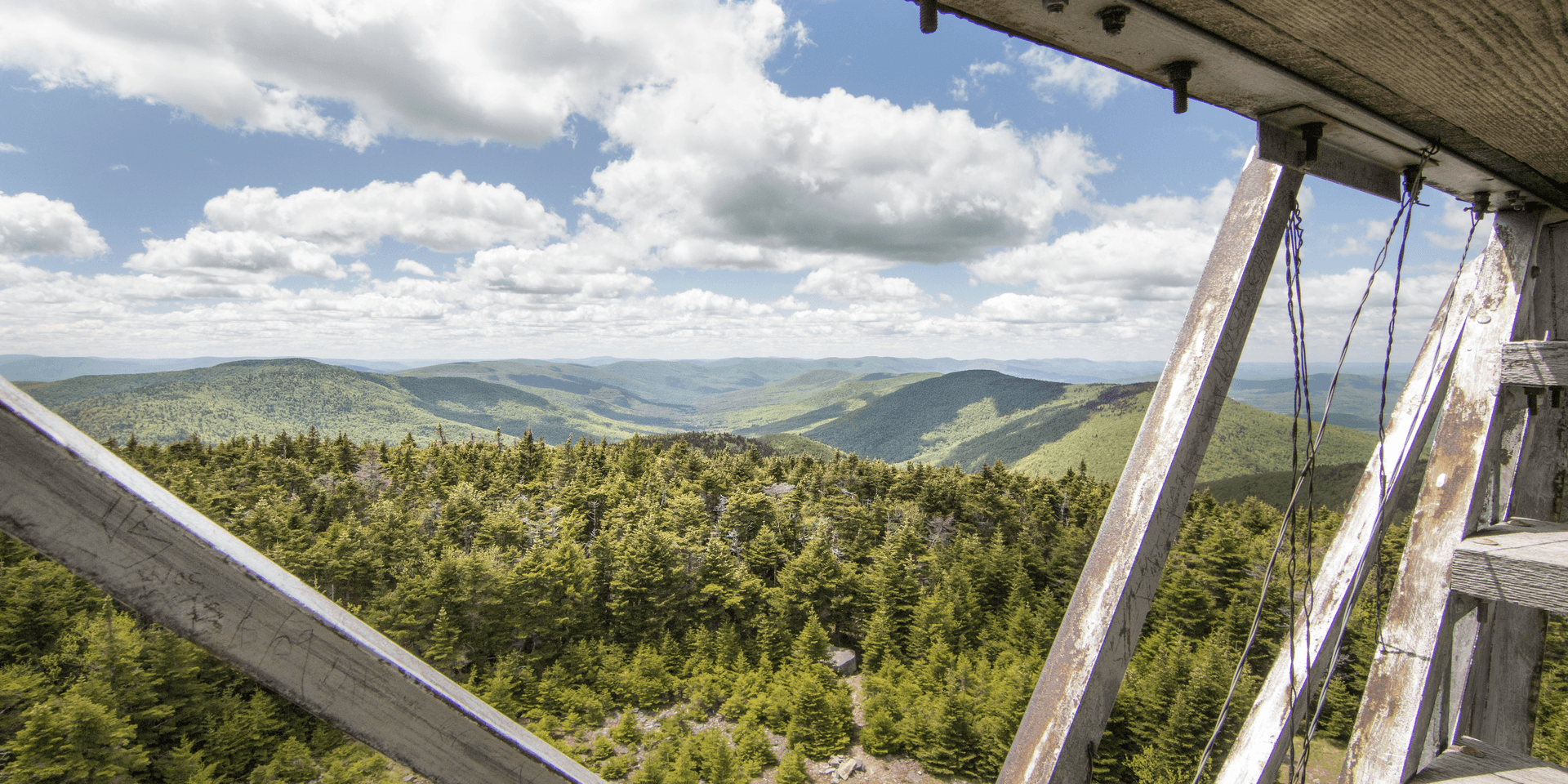You are here
Hunter Mountain has a peak that’s 4,040 feet in elevation. It’s just short of the tallest summit in the region, second only to Slide Mountain (4,180 feet). Located in Greene County, it has hosted a fire tower for over a century with incredible 360-degree views that reach out to and beyond the Catskill Mountains. The blue-blazed Becker Hollow Trail is the steepest path to the summit and an approximately 5-mile round-trip hike that gains over 2,200 feet in elevation.
Begin your journey on Highway 214, a little over a mile south of Route 23A. The trailhead will be marked by a kiosk and large stone gateway. The first mile will be a shallow grade along a stream. The entire mountain is in the Hudson River watershed, and it is very common for these rocky trails to be covered with water runoff. As the path turns away from the stream, you’ll begin a steep and unforgiving climb to the peak.
After 2.2 miles the trail comes to an intersection with the yellow-blazed Hunter Mountain. This half-mile path leads north to the fire tower, still gaining elevation, but now at a much slower rate. The pine trees will open up to reveal a large clearing with a ranger cabin, which is staffed on the weekends, a picnic table, and the 60-foot fire tower. The fire tower sits at a higher elevation than any other in New York State.
Hunter Mountain was originally known as Greenland Mountain until it was changed in the mid-1800s to honor local landlord John Hunter. Between 1903 and 1917, Hunter and southwest Hunter were thoroughly logged by the Fenwick Lumber Company, which virtually eliminated all the virgin forest. Remnants of these extensive operations can still be found in the nearby woods and former railroad beds, and trucking roads remain as mountain trails.
The first fire tower was built out of wood by the state’s Forest, Fish and Game Commission in 1909 and located a quarter-mile to the south. When logging operations ended in 1917, it was replaced by a steel tower, which was then moved to its current location in 1953. In 1997, the tower was added to the National Register of Historic Places, renovated, and reopened to the public in 2000. The top cabin remains padlocked and reserved for rangers.
While this mountain resides in the Hunter Mountain Wild Forest, the tower and vehicle road are technically in the Rusk Mountain Wild Forest because they are not permitted to be part of the “wilderness area.” The Sprucetown Road is an alternate trail to the summit, and with its 1,950-foot elevation gain and width for vehicles, it's easily identifiable. The round-trip distance is a few miles longer, but the climb is not as steep. You can even ride horses on this path and use the dismount located at the tower.
Make sure to visit the tower’s original site just a quarter-mile to the south on the blue trail, which begins just behind the ranger cabin. Upon reaching a four-point intersection, you will notice a cleared rock area with some metal rods sticking up from the ground. These are the remains of the first tower. The yellow trail to the west will lead to an open vista of the Hunter-West Kill Mountain Range. You can see mountains such as West Kill, North Dome, Sherrill, Balsam, Vly, and Bearpen. On a clear day, you can even see Skytop Tower and the Shawangunk Mountain Range to the south. Return to the four-trail intersection and descend back down the blue-blazed Becker-Hollow Trail or complete a much larger loop to the red-blazed Diamond Notch Trail, which leads back to Devil’s Tombstone Campground.
There are two lean-to shelters within a few miles of the tower. Campers staying more than three nights are required to have a special permit from the DEC, as are groups over ten persons or more. Refer to the DEC’s website to view camping rules and regulations. Visitors can also trek to the Colonel’s Chairlift at the Hunter Mountain Ski Center. The Catskill Regional Tourism Office and Greene County Tourism websites can provide more information about attractions and recreational opportunities in the area.
Logistics + Planning
Current Weather: Powered by Dark Sky






























Comments
Sign In and share them.